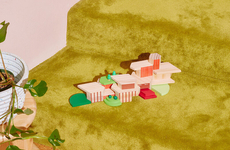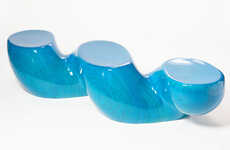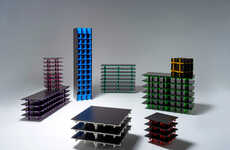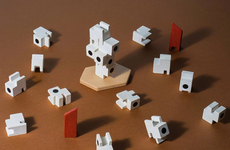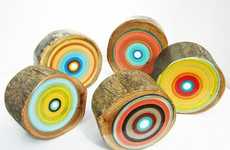
These Drew Tyndell Architectural Artworks are Simplistic
Jana Pijak — September 15, 2012 — Art & Design
References: drewtyndell & sofiliumm.wordpress
These Drew Tyndell architectural artworks are constructed from reclaimed wooden materials. The Atlanta-based artist takes inspiration from his father who worked as an architect.
Tyndell uses timber and other wood scraps, perfecting them into simple geometric shapes and then painting them. The artist takes his customized pieces, layering them together into architecture-inspired compositions that are both colorful and fun.
Reminiscent of simplified structure models, these Drew Tyndell architectural artworks appear multi-dimensional despite their 2D forms. From his use of bright colors and common geometries to the complexity of his layered shapes, these collages are nostalgic while showcasing contemporary design concepts. Fusing aesthetics with environmentally responsibility design, the artworks mimic puzzles that are pieced together from a multitude of important elements that work to enhance one another.
Tyndell uses timber and other wood scraps, perfecting them into simple geometric shapes and then painting them. The artist takes his customized pieces, layering them together into architecture-inspired compositions that are both colorful and fun.
Reminiscent of simplified structure models, these Drew Tyndell architectural artworks appear multi-dimensional despite their 2D forms. From his use of bright colors and common geometries to the complexity of his layered shapes, these collages are nostalgic while showcasing contemporary design concepts. Fusing aesthetics with environmentally responsibility design, the artworks mimic puzzles that are pieced together from a multitude of important elements that work to enhance one another.
Trend Themes
1. Architectural Artworks - Exploring the use of reclaimed wood and geometric shapes to create multi-dimensional compositions.
2. Colorful Collages - Using bright colors and layered shapes to create visually striking artworks.
3. Environmental Design - Incorporating environmentally responsible design principles into art using reclaimed materials.
Industry Implications
1. Art and Design - Opportunity for artists and designers to create unique artworks using reclaimed materials and geometric shapes.
2. Architecture - Potential for architects to explore the use of reclaimed materials and colorful geometric compositions in building designs.
3. Sustainability - Companies focused on sustainability can find inspiration in the use of reclaimed wood and environmentally responsible design principles in art and design.
2.2
Score
Popularity
Activity
Freshness


